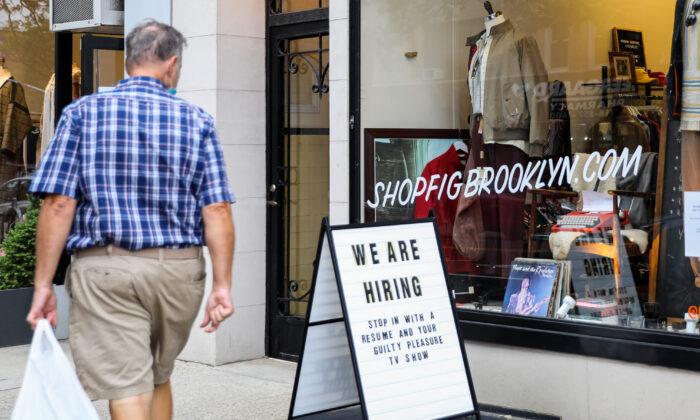The U.S. labor market could be showing signs of slowing down as the economy added 315,000 new jobs in August, significantly less than July’s revised 526,000.
Economists had forecast a gain of 300,000 new jobs and a jobless rate of 3.5 percent.
Job creation in August was broad-based, with professional and business services (68,000), health care (48,000), and retail (44,000) leading the way, BLS data show. Manufacturing employment jumped 22,000, while mining jobs rose 6,000. Positions in the financial activities sector advanced by 17,000.
Employment levels in multiple industries were little changed, including construction, transportation and warehousing, information, and government.
Average weekly hours eased to 34.5 from 34.6. Average hourly earnings were unchanged at 5.2 percent year-over-year. On a month-over-month basis, average hourly earnings rose by 0.3 percent, or 10 cents, to $32.36 last month.
The number of Americans who are currently working two or more jobs totaled 7.485 million, up from 6.783 million at the same time a year ago.
According to economists, an increase in job seekers may relieve pressure on businesses in the coming months.
“The new entrants shouldn’t have any problem finding jobs, and an increase in job seekers may take the pressure off employers to raise wages to attract workers,” Wall Street veteran Ed Yardeni said in a note.
At the same time, this notable jump in labor participation led to “slightly below-consensus readings for average hourly earnings,” said Theodore Littleton, senior economist at Refinitiv IFR Markets.
“IFR believes that the August BLS employment report merits around a B+, with roughly on-target payrolls numbers but a surprising increase in the unemployment rate due to very good reasons,” he added.
Financial markets failed to hold their post-report gains as the leading benchmark indexes ended the session in the red on Sept. 2. The Dow Jones Industrial Average fell more than 1 percent, the S&P 500 slumped 1.07 percent, and the Nasdaq Composite Index tumbled 1.31 percent ahead of the U.S. Labor Day holiday.
Jan Szilagyi, CEO and founder of Toggle AI, an investment research firm, called it a “goldilocks” report, with labor market tightness easing up but the economy still humming along.
A Week of Labor Data
Before the BLS published the August jobs report, there were other numbers that offered some insights into the current state of the U.S. labor market.“Our data [suggest] a shift toward a more conservative pace of hiring, possibly as companies try to decipher the economy’s conflicting signals. We could be at an inflection point, from super-charged job gains to something more normal,” Nela Richardson, the chief economist at ADP, said in a statement.
The number of Americans filing for unemployment claims eased to 232,000 in the week ending Aug. 27, below the market estimate of 248,000. This was also slightly down from the previous week’s reading of 237,000. Continuing jobless claims rose to 1.438 million, while the four-week average, which eliminates week-to-week volatility, fell to 241,500.
U.S.-based companies announced intentions to slash 20,485 jobs in August, down from 21 percent in July, new numbers confirmed. This was the lowest reading since February, but it was also up 30 percent from the same time a year ago.
Will the Labor Market Hold Steady?
Federal Reserve Chair Jerome Powell’s recent Jackson Hole Economic Symposium speech was crucial for the U.S. economy and the financial markets. The central bank chief abandoned his “soft landing” proposal and hinted at a “growth recession,” one that consists of tepid economic growth and rising unemployment.Economists contend that it typically takes between 6 and 12 months for higher interest rates to seep into the economy and have a larger impact on conditions. It has been six months since the Fed began moving forward with rate hikes. So, could the sizzling labor market be on the cusp of slowing down?
“Respondents are also taking proactive steps to streamline the workforce and establish the appropriate mix of worker skills for the future,” the survey said. “This comes as no surprise. After a frenzy of hiring and a tight labor market over the past few years, executives see the distinction between having people and having people with the right skills.”





